1. Poseidon's Supermoon
The supermoon hangs heavy over the Temple of Poseidon on Cape Sounion, south of Athens, around twilight on Saturday evening.
Due to the moon's egg-shaped orbit, our natural satellite is at perigee - its closest approach to Earth - about once a month. The term "supermoon" was coined in 1979 to describe a full moon that coincides with perigee. (Apogee, when the moon is farthest from us, also occurs on a roughly monthly schedule.)
At its closest on Saturday, the moon was 221,801 miles (356,955 kilometres) from our planet - and just minutes away from of the official full moon phase, at 11:35 p.m. ET.
"As a consequence, this translates into it appearing as much as 16 percent bigger and 30 percent brighter than other full moons of 2012 - not a huge amount, but definitely noticeable," said Geza Gyuk, an astronomer at the Adler Planetarium in Chicago.
— With reporting by Andrew Fazekas
2. Supermoon in Seattle
While a treat for sky-watchers, the supermoon (pictured behind Seattle's Space Needle this weekend) on Saturday wasn't a rare event: The full moon coincides with lunar perigee about once a year, on average. And because the size of the moon's orbit varies slightly, each monthly perigee is not always the same distance from Earth.
March 2011, for example, saw the closest supermoon in two decades - a mere 221,565 miles (356,575 kilometres) from Earth. (See pictures of last year's supermoon.)
3. Supermoon Rising
Partly obscured by clouds, the supermoon rises over Veszprem (map), Hungary, as seen in a composite of pictures taken Saturday night.
According to astronomers, the most picturesque moments during a supermoon occur in the minutes after local sunset, as the full moon hovers above the horizon.
"What you should see is the moon rising, deeply coloured and looming over the foreground objects," the Adler Planetarium's Gyuk said. (Also see "Best Space Pictures of 2011: Editors' Picks.")
Photo credit link: Ladanyi Tamas, TWAN.
4. Big Orange Over Big Apple
Seen from West Orange, New Jersey, the full moon hangs over the Manhattan skyline like a celestial clementine Sunday night.
In general, the moon appears redder near the horizon, because its light is passing through more of our planet's thick atmosphere than when the moon is higher - the atmosphere tends to scatter blue light, letting mostly red wavelengths through.
5. Redeeming Light
Shining through the clouds, the supermoon seems to hover above the statue of Christ the Redeemer in Rio de Janeiro, Brazil, in the wee hours of Sunday.
Far from a formal astronomical term, "supermoon" has also come to be used when perigee coincides with new moons - when the lunar orb positions itself between Earth and the sun, so that the side of the moon that faces us is unlighted.
Last September, for instance, a new moon made its closest approach to Earth, giving rise to a "dark" supermoon.
6. Lunar Beacon
The full moon appears to dip into the sea behind a lighthouse in Loctudy, France, early Monday.
Astronomers were quick to note that, despite minor known effects on Earth, the moon's close approach does not cause natural disasters. (Related: "Titanic Sunk by 'Supermoon' and Celestial Alignment?")
"While we know that during new and full moons the tides are greatest - and if it's in concert with a storm surge, it might produce unusual flooding-there is no scientific evidence that earthquakes and other natural disasters are connected," Gyuk said.
Photo credit link: Laurent Laveder, TWAN.
7. Rainbow Moon
Shining high over Austria Sunday night, the full moon paints the clouds with a halo of ethereal colours. Such lunar halos happen when moonlight interacts with the pencil-shaped ice crystals in high, wispy cirrus clouds.
Photo credit link: Christoph Malin, TWAN.
8. Full Moon Favela
The golden disk of a full moon rests over a Rio de Janeiro shantytown on Sunday.
No major effects on Earth have so far been linked to supermoons, the Adler Planetarium's Gyuk emphasized.
"Supermoons have been happening for billions of years, and nothing particularly special occurs on these dates - except, of course, for a beautiful full moon."
9. White Lotus
The Lotus Temple in New Delhi, India, seems poised to swallow the full moon in a picture taken Sunday night.
Next month the full moon will again roughly coincide with perigee, albeit one that puts the moon a bit farther away, at 222,750 miles (358,482 kilometres), Gyuk said.
So if you missed this weekend's sky show, don't worry, Gyuk said. June's "full moon will appear to be just half of one percent different in size" and "only one percent less bright" than May's supermoon.
Photo credit link: Ajay Talwar, TWAN.
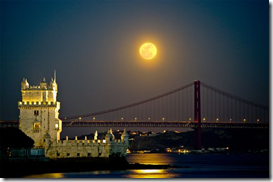
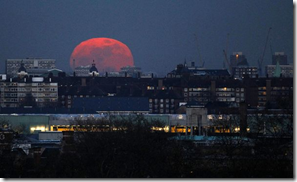
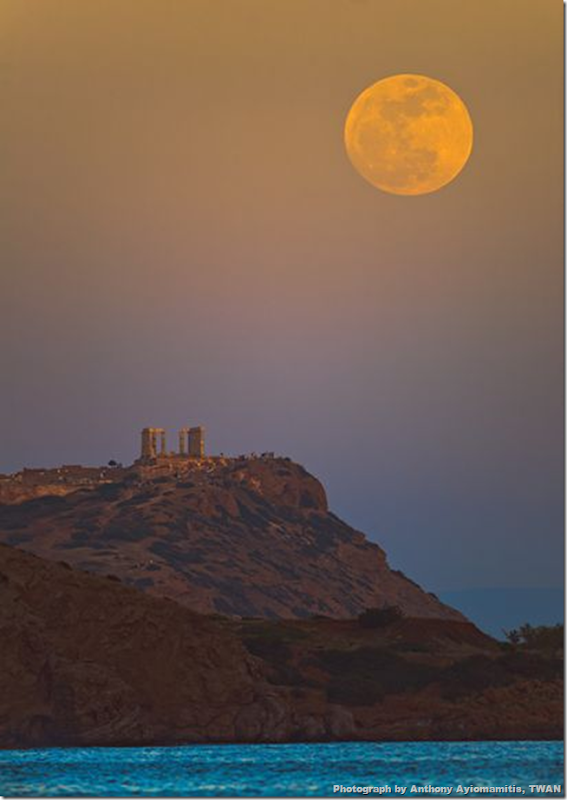
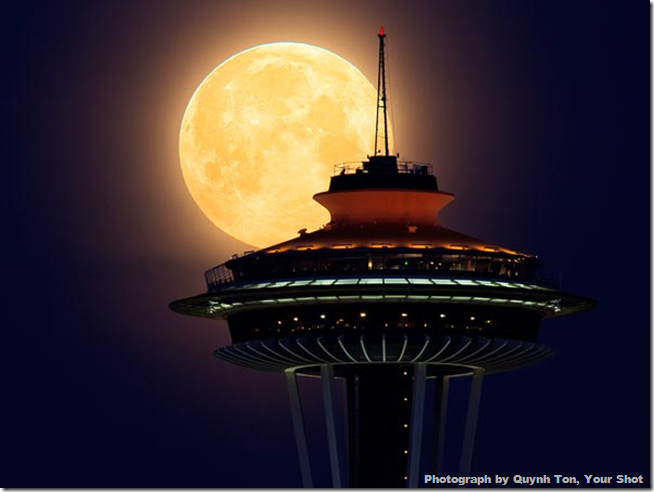
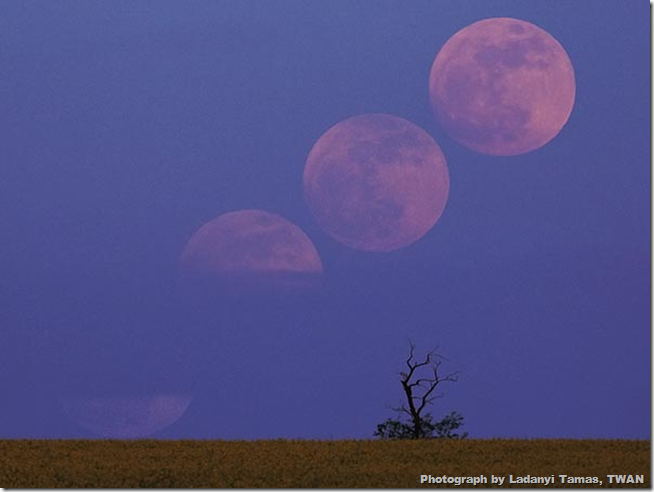
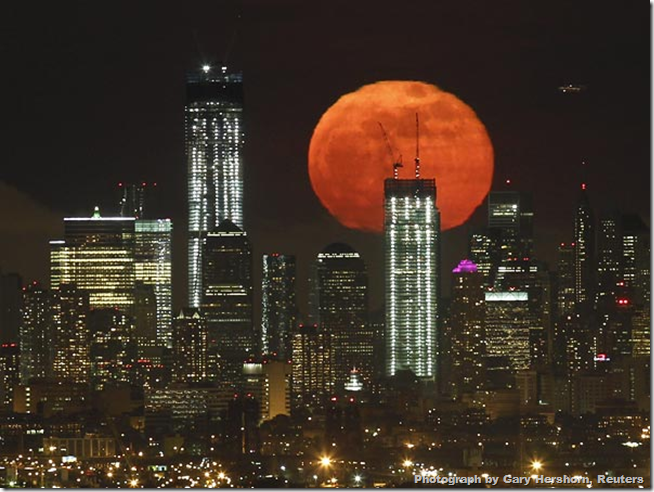

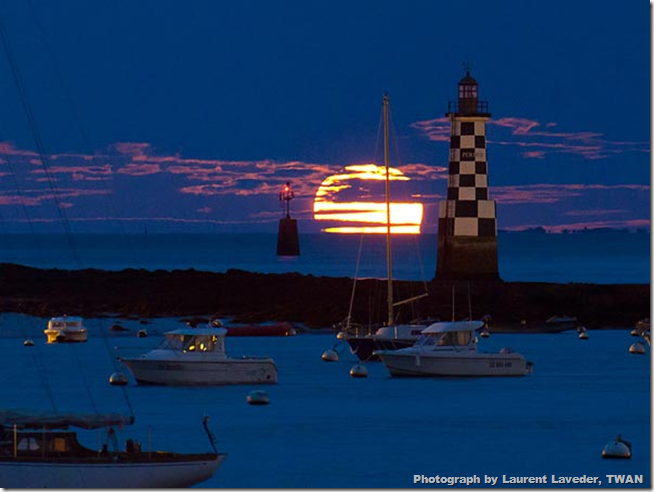
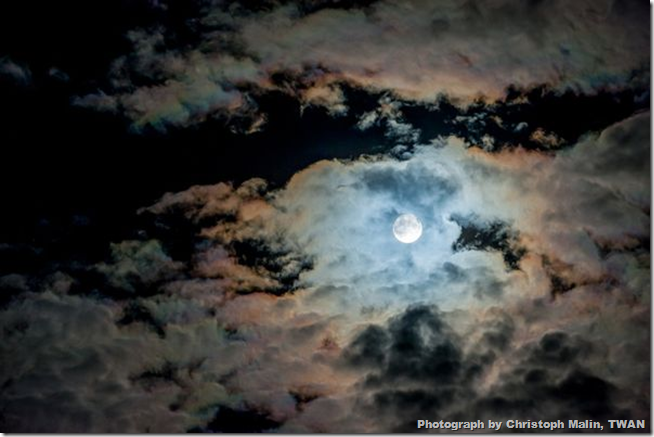
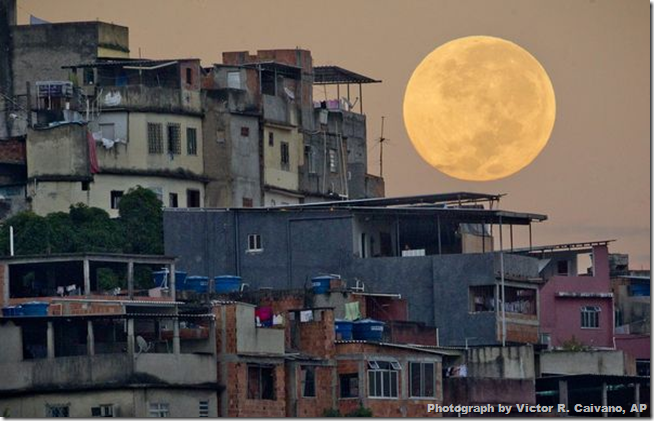
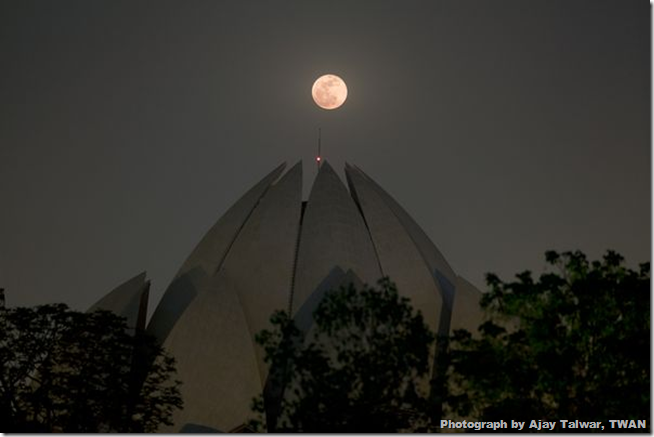
No comments:
Post a Comment
Please adhere to proper blog etiquette when posting your comments. This blog owner will exercise his absolution discretion in allowing or rejecting any comments that are deemed seditious, defamatory, libelous, racist, vulgar, insulting, and other remarks that exhibit similar characteristics. If you insist on using anonymous comments, please write your name or other IDs at the end of your message.